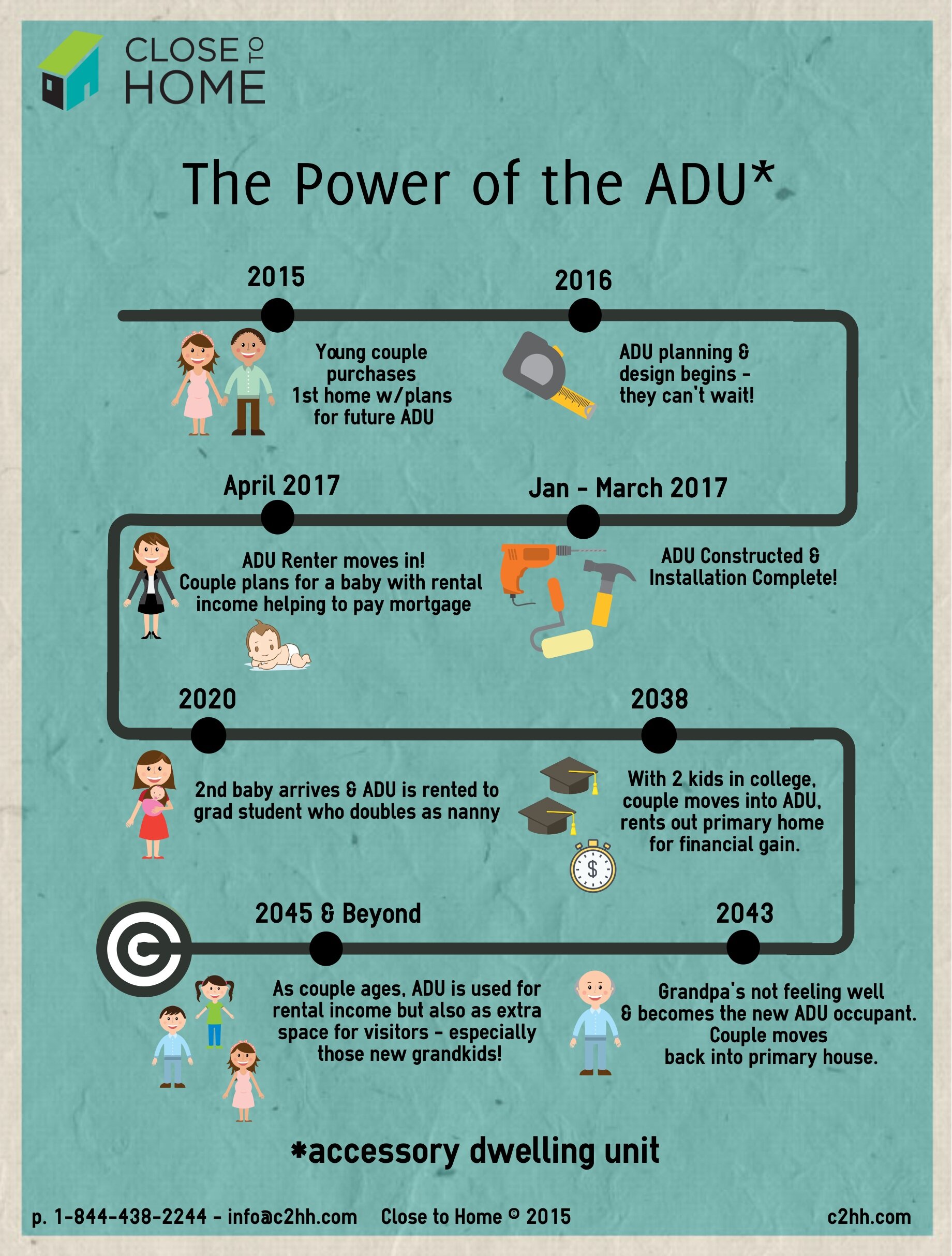
What is an Accessory Dwelling Unit?
An accessory dwelling unit (ADU) is defined by the U.S. Department of Housing & Urban Development as, “…additional living quarters on single-family lots that are independent of the primary dwelling unit. The separate living spaces are equipped with kitchen and bathroom facilities, and can be either attached or detached from the main residence.” The ADU concept has been around for a long time and over the years the units have been referred to as: accessory apartments, second units, granny flats, mother-in-law units, etc. Some cities, such as Seattle, specify whether or not the ADU is attached or detached from the primary residence, referring to a detached accessory dwelling unit as a “DADU”.
The ADU dates back to the early 1900’s because it was simply often a necessity to have a physical addition to one’s single family home. If we think about the fact that families used to live inter-generationally out of the need for family support, not much has changed.
Young parents still need parental help, and sometimes parents need to live with their grown children, for many reasons. Whether it is a young college graduate coming home while job hunting (& beyond), or the elder family member(s) in need of care, we all have examples within our families and friendship groups where we know that an ADU would come in handy.
All of that need predates the issues of affordability and density that are bringing the ADU issue to the fore in 2015. These issues, now reaching crisis points in a number of major American cities, are pushing the development of ADUs into almost daily news. Whether addressing the need to keep our cities diverse from both a racial and a socioeconomic perspective, or addressing the issue of urban sprawl, the ADU movement could be one solution to a number of different problems.

The Power of the ADU
As shown in the infographic above, the ADU concept allows for much family flexibility on one single lot. The average homeowner sells their home and buys a new one every seven years. But as the cost of acquisition becomes more and more challenging, and as people invest more of their nest eggs, equity, and souls into properties, the idea of staying longer in one home begins to appeal. The ADU allows for: rental income, space for friends and family of any generation (families have different needs at different stages of life), plus the flexibility of moving back and forth between a smaller and larger home when necessary.
As the population in general ages, we must begin to plan for “aging in place” – how, when we build or remodel, can we plan for our own use of a property in our later years? How can we provide “intergenerational equity” – building/remodeling with the confidence that a friend or family member in a wheelchair could access our home for a visit? These are just some of the issues that we can help you think about and plan for in your work with Close to Home.